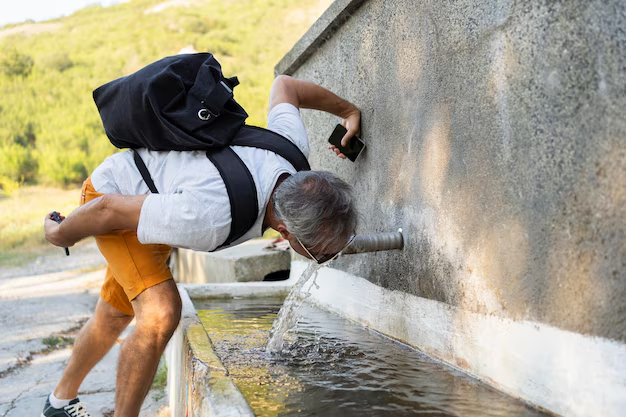Rust beber agua dentro de la base

Rust and Drinking Water Inside a Base: Causes, Effects, and Prevention
Rust formation in water systems inside a base can be a significant concern, affecting not only infrastructure but also water quality and human health. This article explores the causes of rust in water supplies, its potential risks, and effective prevention and mitigation strategies to ensure safe drinking water within a base.
Understanding Rust Formation
Rust, scientifically known as iron oxide, forms when iron or steel comes into prolonged contact with water and oxygen. This corrosion process is accelerated by environmental factors such as high humidity, mineral deposits, and chemical reactions.
Causes of Rust in Water Systems
- Corrosive Water: Low pH levels or high levels of dissolved oxygen can increase corrosion in pipelines.
- Old or Uncoated Pipes: Aging iron or steel pipes without proper protective coatings degrade over time.
- High Iron Content: Naturally occurring iron in groundwater sources can lead to rust buildup.
- Stagnant Water: Prolonged stagnation in pipes can encourage oxidation and rust formation.
- Electrochemical Reactions: Galvanic corrosion occurs when different metals in a water system interact.
- Improper Maintenance: Lack of regular inspections and cleaning allows corrosion to spread unnoticed.
Effects of Rust in Drinking Water
Health Impacts
While rust itself is not highly toxic, excessive iron in drinking water can:
- Alter taste, smell, and color.
- Cause gastrointestinal discomfort if consumed in large amounts.
- Lead to bacterial growth, posing health risks.
Infrastructure Damage
- Pipe Blockages: Rust accumulates, restricting water flow and pressure.
- Weakened Structures: Corrosion weakens pipelines, leading to leaks and potential bursts.
- Increased Maintenance Costs: Frequent repairs and replacements become necessary.
Water Quality Concerns
- Discoloration: Water may appear reddish-brown, reducing its appeal for consumption.
- Unpleasant Taste and Odor: Rusty water often has a metallic taste and musty smell.
- Sediment Accumulation: Rust particles can settle in tanks and filters, affecting overall water purity.
Prevention Strategies
1. Use Corrosion-Resistant Materials
- Install pipes made of stainless steel, copper, or plastic to minimize rust formation.
- Apply protective coatings and linings to metal pipes to prevent direct water contact.
2. Regular Maintenance and Inspections
- Conduct routine inspections to detect early signs of rust and corrosion.
- Implement flushing protocols to remove stagnant water and rust buildup.
- Replace outdated infrastructure with modern, rust-resistant materials.
3. Water Treatment Solutions
- Use pH stabilizers to prevent excessive acidity in water.
- Install water softeners to reduce mineral content that accelerates corrosion.
- Introduce chlorination and filtration to remove iron and prevent bacterial growth.
4. Cathodic Protection
- Apply cathodic protection methods such as sacrificial anodes to prevent rust formation.
- Utilize electrical current systems to counteract electrochemical corrosion.
5. Alternative Water Storage Solutions
- Use plastic or fiberglass storage tanks instead of metal-based tanks.
- Implement proper sealing and drainage systems to prevent water stagnation.
Solutions for Existing Rust Contamination
Flushing and Cleaning
- Perform shock flushing to remove accumulated rust particles.
- Utilize chemical descalers to dissolve corrosion deposits.
Pipe Replacement
- If corrosion is extensive, replacing old pipes with non-corrosive materials is the best long-term solution.
Advanced Filtration Systems
- Install iron removal filters or reverse osmosis systems to purify drinking water.
Conclusion
Rust in drinking water inside a base can pose both health and infrastructure challenges. However, with proper preventive measures, regular maintenance, and water treatment solutions, these issues can be mitigated effectively. Ensuring access to clean, safe drinking water is crucial for the well-being of residents and the longevity of water distribution systems within a base.



